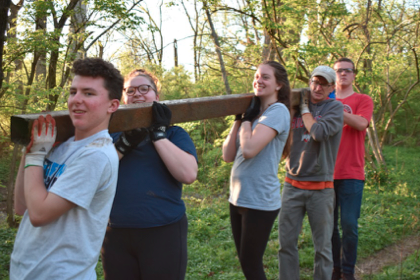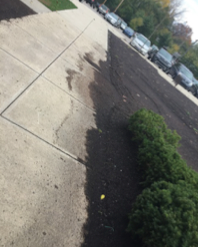2019, CINCINNATI, OH, UNITED STATES

Abby Shores noticed a problem with a local stream in her community. The stream, which she calls St. Clare stream, runs through a three by one half block wooded area behind her house. It eventually connects to the Mill Creek. This area is owned by a local convent and includes a five-foot City of Wyoming easement. Unfortunately, it had been neglected due to its small size and isolated location. This lack of caring led it to be abused by illegal dumping, littering, and general misuse.
Abby created an immediate solution to turn the area from an abandoned dump to a community greenspace. She collaborated with local officials at the City of Wyoming to install a trash can on their portion of the property. This trash can not only prevented litter, but served as a symbol of her community and city’s commitment to the area. Because of her hard work the trash can has been put on the city’s weekly pickup route. She estimates the trash can will reduce litter by up to 56%.

The second part of her project was designing a cleanup day of the stream. This promoted community outreach and a greater unity among neighbors. She went door to door mobilizing volunteers and utilized social media to spread the word. During the cleanup day they removed almost 300lb of waste from the stream. This included everything from aluminum cans to iron construction beams. She hopes this cleanup day inspired others to hold events in the area. It showed how greater use of a space promotes long term environmental sustainability. Even though the stream is small, its revitalization served as an example to other municipalities.














